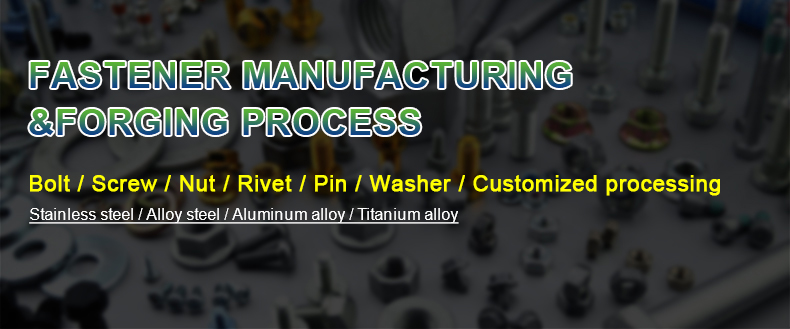
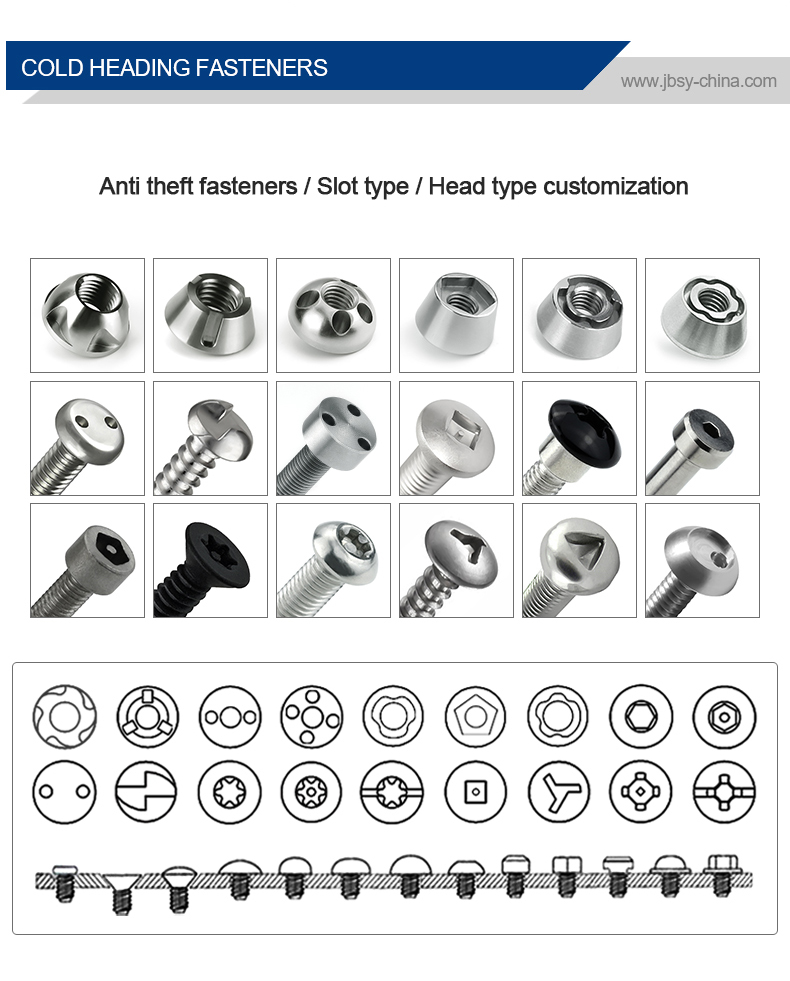
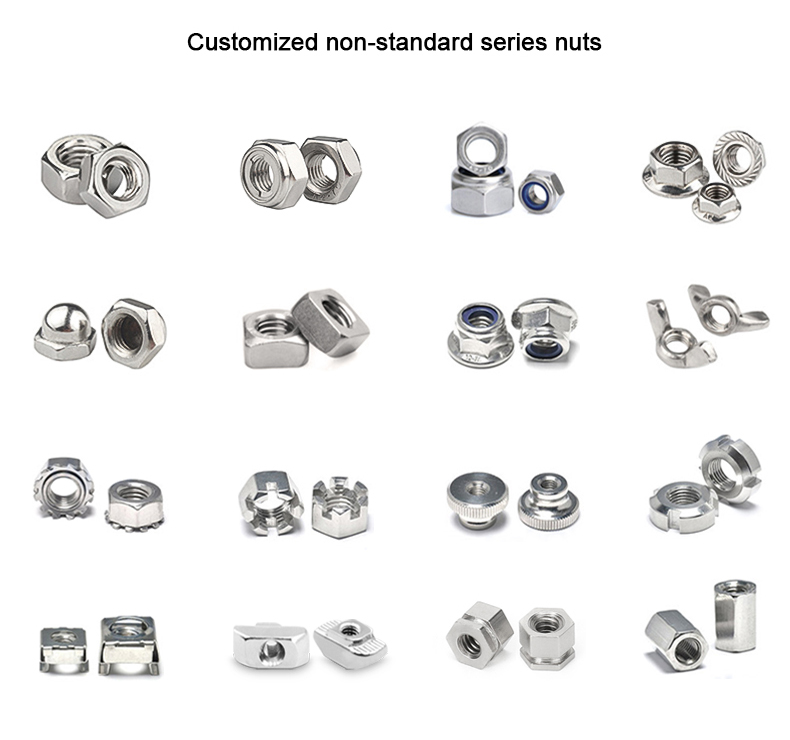
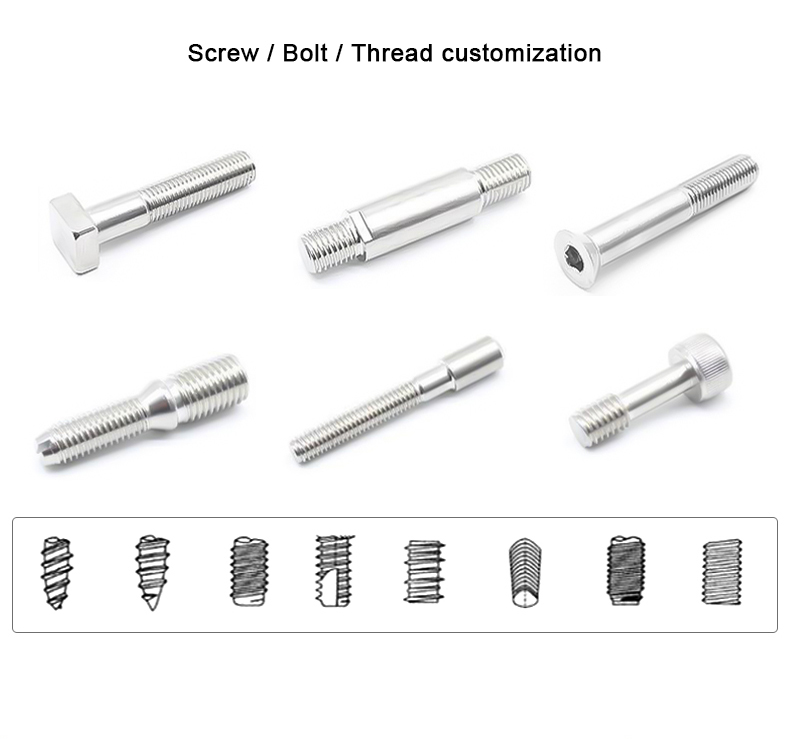
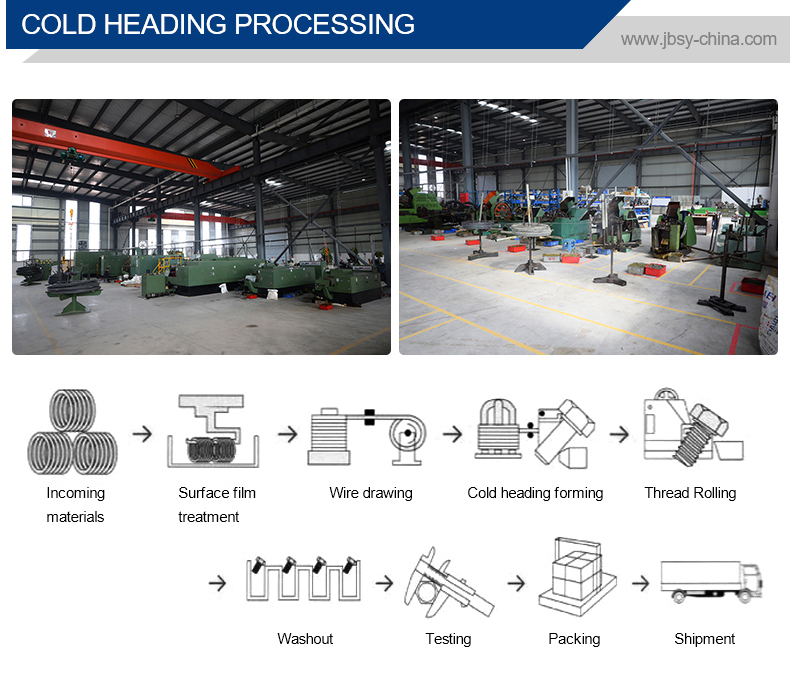
El proceso de estampado en frío es uno de los nuevos procesos de mecanizado a presión de menor o ningún corte
metal. Es un método de transformación que utiliza la deformación plástica del metal bajo la acción de
fuerzas externas y, con ayuda de moldes, redistribuye y transfiere el volumen de metal para formar
las piezas o formatos necesarios. El proceso de estampación en frío es el más adecuado para producir piezas estándar.
elementos de fijación como pernos, tornillos, tuercas, remaches, pasadores, etc.
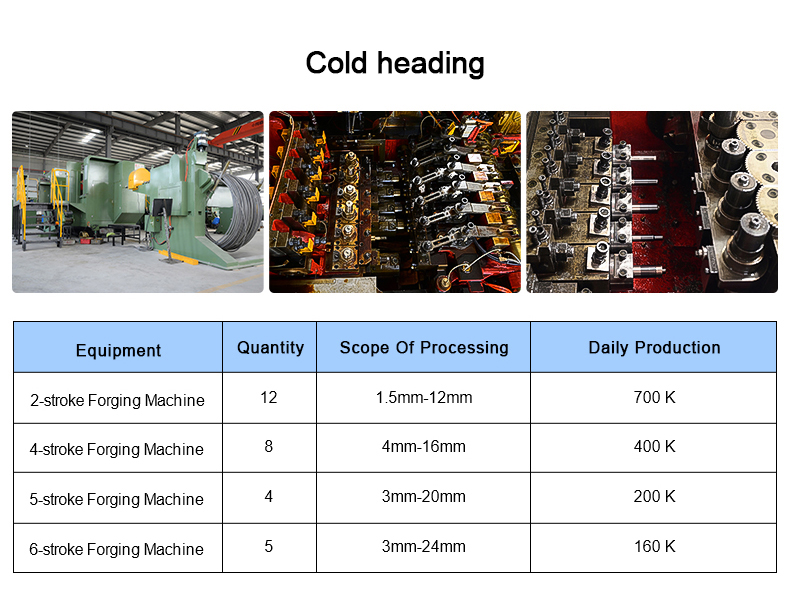
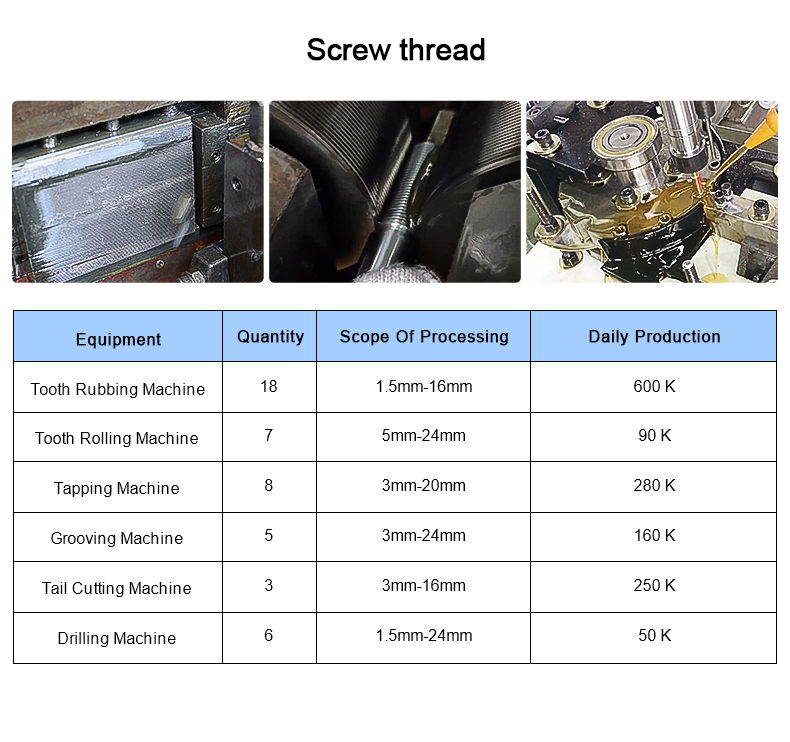
Pernos de seguridadtambién conocidos como pernos de alambre de seguridad o pernos de cabeza perforada, son elementos de fijación especializados diseñados para ser asegurados con alambre de seguridad (alambre de seguridad) para evitar que se aflojen debido a la vibración o rotación. Estos pernos se utilizan habitualmente en la industria aeroespacial, automovilística, de deportes de motor y otras aplicaciones de alto rendimiento en las que la fiabilidad es fundamental.
Revestimiento de pernos para pernos de alambre de seguridad:
El chapado se aplica a los pernos de alambre de seguridad para mejorar la resistencia a la corrosión, reducir la fricción, mejorar el aspecto y, a veces, para cumplir requisitos específicos de conductividad o térmicos. Las opciones de chapado más comunes son:
1. Cadmiado (Cad)
-
Propiedades: Excelente resistencia a la corrosión, buena lubricidad y protección sacrificial.
-
Apariencia: Plata amarillento.
-
Uso común: Aplicaciones aeroespaciales y militares (aunque se están eliminando progresivamente por motivos medioambientales).
-
Limitaciones: Tóxico, restringido por las normativas RoHS y REACH.
2. Cincado (Zn)
-
Propiedades: Buena resistencia a la corrosión, rentable.
- Uso común: Aplicaciones de automoción, industriales y de uso general.
-
Limitaciones: Menos duradero que el cadmio en entornos difíciles.
4. Cromado (Cr)
-
Propiedades: Extremadamente duro, excelente resistencia al desgaste, decorativo.
-
Apariencia: Brillo de espejo.
-
Uso común: Motores de alto rendimiento, aplicaciones marinas.
-
Limitaciones: Puede ser quebradizo y propenso a astillarse.
- Perno de alambre de seguridad chapado
Consideraciones sobre la selección:
-
Medio ambiente: Las aplicaciones marinas o de alta humedad pueden requerir cadmio o níquel.
-
Reglamentos: El cadmio está restringido en muchas industrias; se prefieren alternativas como el zinc-níquel.
-
Temperatura: El níquel y el cromo soportan mejor el calor que el zinc.
-
Estética: El cromo y el níquel proporcionan un aspecto pulido, mientras que el óxido negro o el zinc ofrecen un acabado mate.
Conclusión:
La elección del chapado de los pernos de alambre de seguridad depende de los requisitos mecánicos, medioambientales y normativos de la aplicación. La industria aeroespacial suele utilizar cadmio o cinc-níquel, mientras que las aplicaciones industriales y de automoción pueden optar por revestimientos de cinc o fosfato. Compruebe siempre las normas del sector (por ejemplo, ASTM, MIL-SPEC) al seleccionar el revestimiento para aplicaciones críticas.


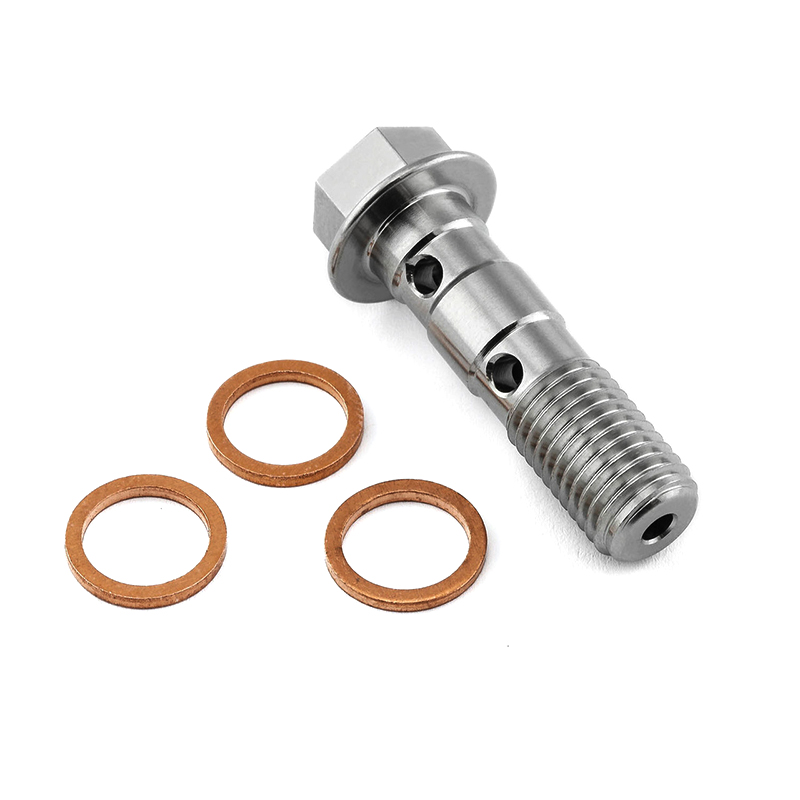
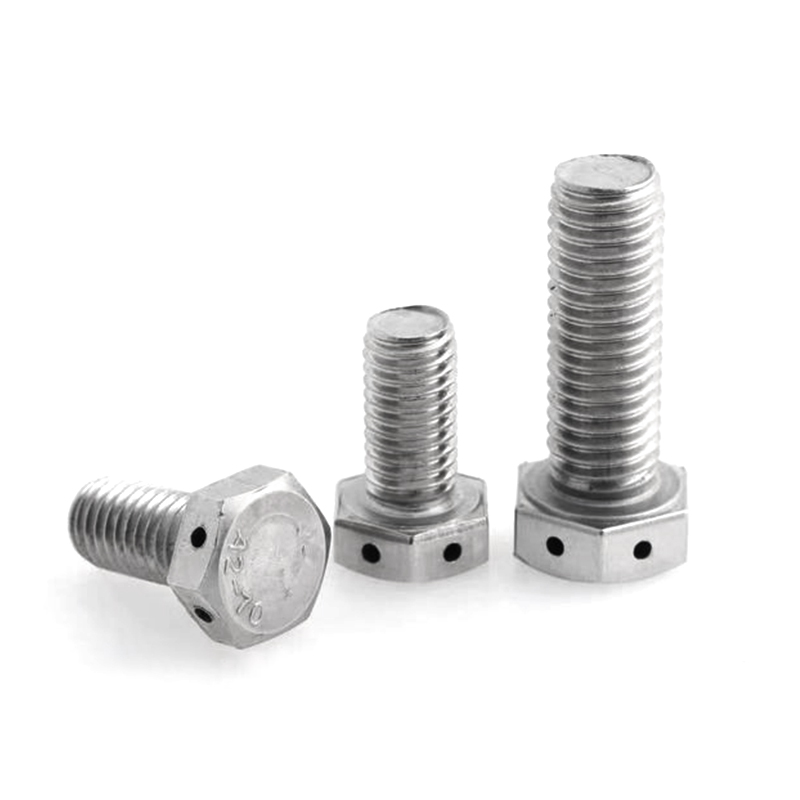
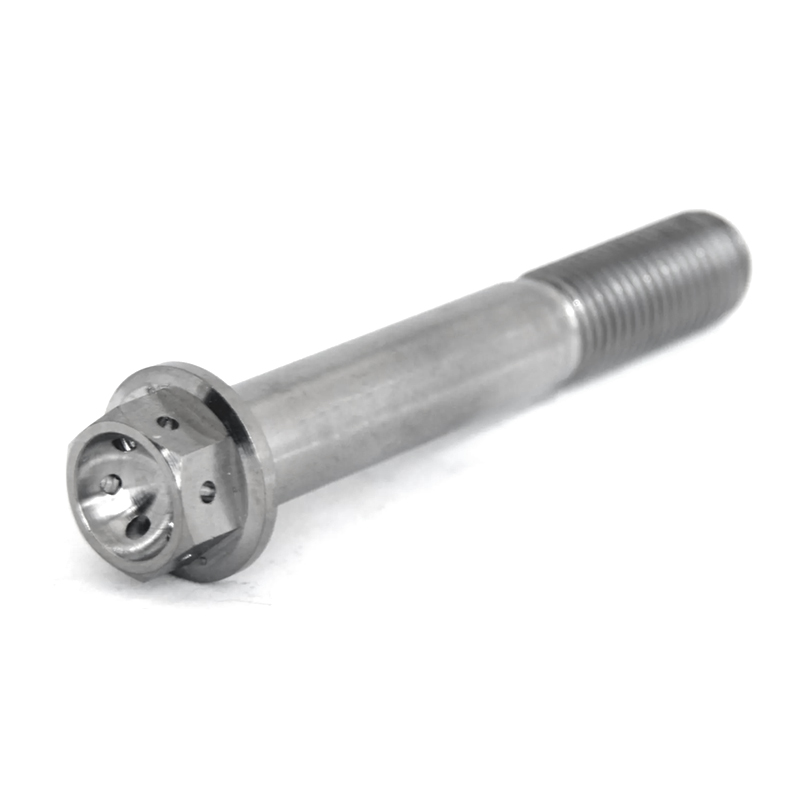
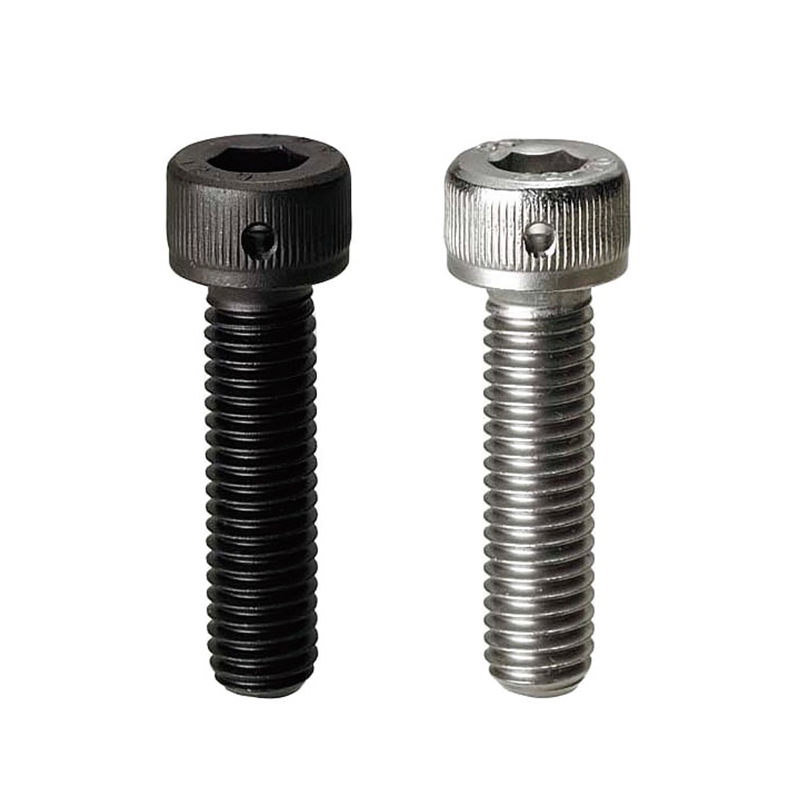

Valoraciones
No hay valoraciones aún.